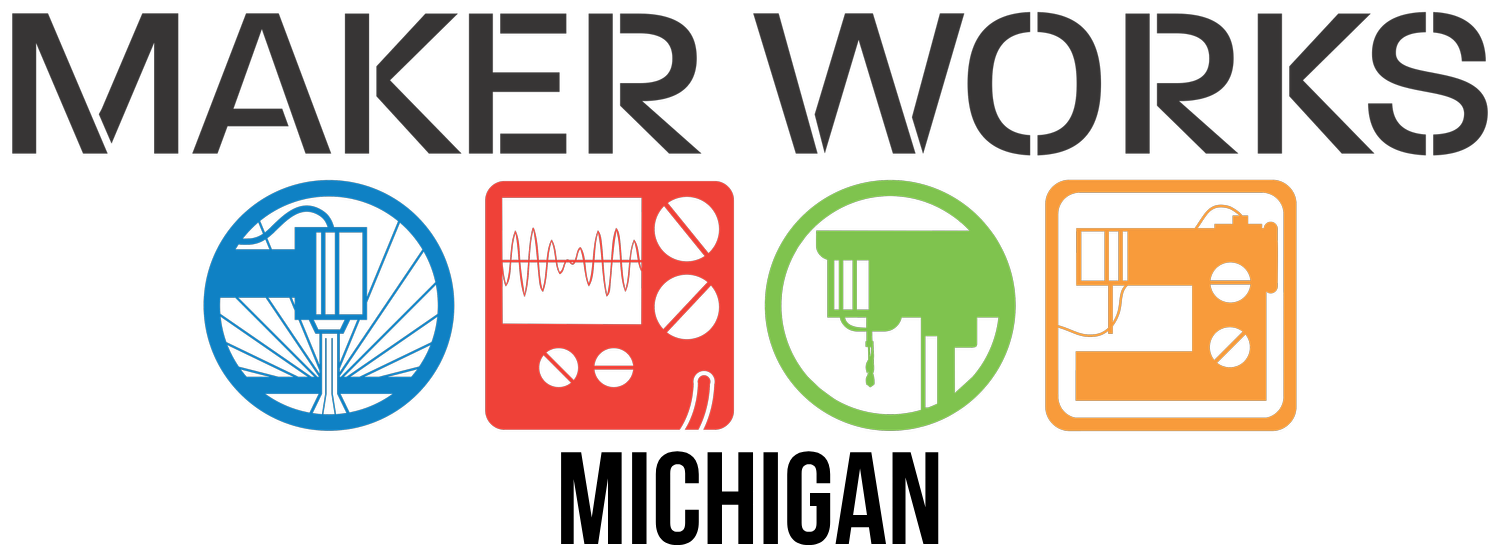Before we even opened the doors to our makerspace (Maker Works), my business partner Tom Root and I talked about how we could help other people create a makerspace in their community. (We probably don’t have to convince you why we think they’re important for every community to have.) And as anyone who runs a makerspace knows, we ended up spending a huge amount of time (and still do) on phone calls and tours with people who want to start their own makerspace. We do think those tours are useful, and if you want to drop by, we’re happy to spend some time talking shop. But as time went by, Tom and I talked more about presenting the systems we use with enough detail and within an organizing framework so that someone could hit the ground running, rather than having to re-invent the makerspace wheel over and over again.
Basically, we wanted to create the kind of course that we wished we could have taken before we opened our space. So in 2014 we had our first Makerspace Operations Bootcamp, and have held a few each year since. These are five often very full days and a bit overwhelming at times, for instructors and attendees both!
A big question is why two yahoos from Ann Arbor think they know anything about makerspace operations. A factual, but uninspiring answer is that, well, we’ve been operating one since 2011. (By the way, we don’t claim special insight into starting a makerspace–we’ve only done that once.) But the deeper answer has to do with the systems we use and how they align with the values of our makerspace and the larger Maker movement.
Briefly–trying to condense five days of content here–it’s our experience that if you start from some core Maker values, you end up wanting systems that
Promote safety
Value openness
Strive for continuous improvement
Welcome and support members with a wide range of experiences and knowledge
Provide access to and preservation of nice equipment
Organize of tools for quick retrieval
Provide great customer service
Encourage self-service, increase skills
Support the local community
Promote the larger makerspace and maker movements
Reduce impact on environment
Support and encourage member creativity
Promote an optimistic view of the future
Empower people to be more than just consumers
Reduce waste
and so on
And it turns out that there are systems drawn from Lean manufacturing and other practices that do just that, including:
Standard Operating Procedures (SOPs)
5S
Open Book Management
How to Instruct
Servant Leadership
Recipes for creating culture
Recipes for giving great customer service
43 folders
Visual management systems
and so on
In the bootcamp, we begin by discussing the relationship between the organization’s mission, vision, guiding principles, systems, culture, experience, and bottom lines, and the need for consistency between them. This framework organizes much of the content of the week. With this in mind, we then delve into each of these elements and explore specific systems like SOPs, using an actual makerspace to see how they work in real life.
In the end, though, none of the systems, none of the tools, none of the organizing makes any sense without the context of a mission, a vision, guiding principles, and bottom lines. Open book management takes effort. Servant leadership takes effort. Great customer service takes time. We hope by the end of the week that we’ve made the case that these systems can all fit together and produce a sustainable makerspace consistent with its mission.
How did we end up with these systems? Tom actually uses these in running a local business with over $10M annual revenue and over 400 employees during the busy holiday season–employees who often come in without any experience and have to become almost immediately productive. The many parallels suggested that a makerspace run using the same types of systems could help members become productive and keep them safe without requiring the constant attention of staff. The values of the business were also something we wanted to follow–for example, having more than just profit as a bottom line. (Our bottom lines are people, planet, and profit.) We take a tour of this business, since it is another opportunity to see the concepts in action.
In the end, we want to have more makerspaces in the world. We think these tools increase those odds, and encourage anyone who operates or is thinking of operating a makerspace to take a look at them.
Can’t make it to one of our bootcamps?
Our member handbook has our guiding principles, mission, and other information: http://maker-works.com/member-handbooks/
SOPs: http://maker-works.com/using-recipes-for-a-great-makerspace/
5S (organizing workspaces to reduce waste): https://en.wikipedia.org/wiki/5S_(methodology)
Open Book Management: http://greatgame.com/about/the-origin-of-open-book-management/
Giving Great Service: https://www.amazon.com/Zingermans-Guide-Giving-Great-Service/dp/1401301436
Zingerman’s business practices (including discussion of business framework we use): https://www.amazon.com/Anarchists-Approach-Building-Business-Zingermans/dp/0964895684
Lean (many resources–this is an introduction): http://paulakers.net/docs/leannutshell.pdf and https://www.fastcap.com/estore/pc/viewContent.asp?idpage=88









